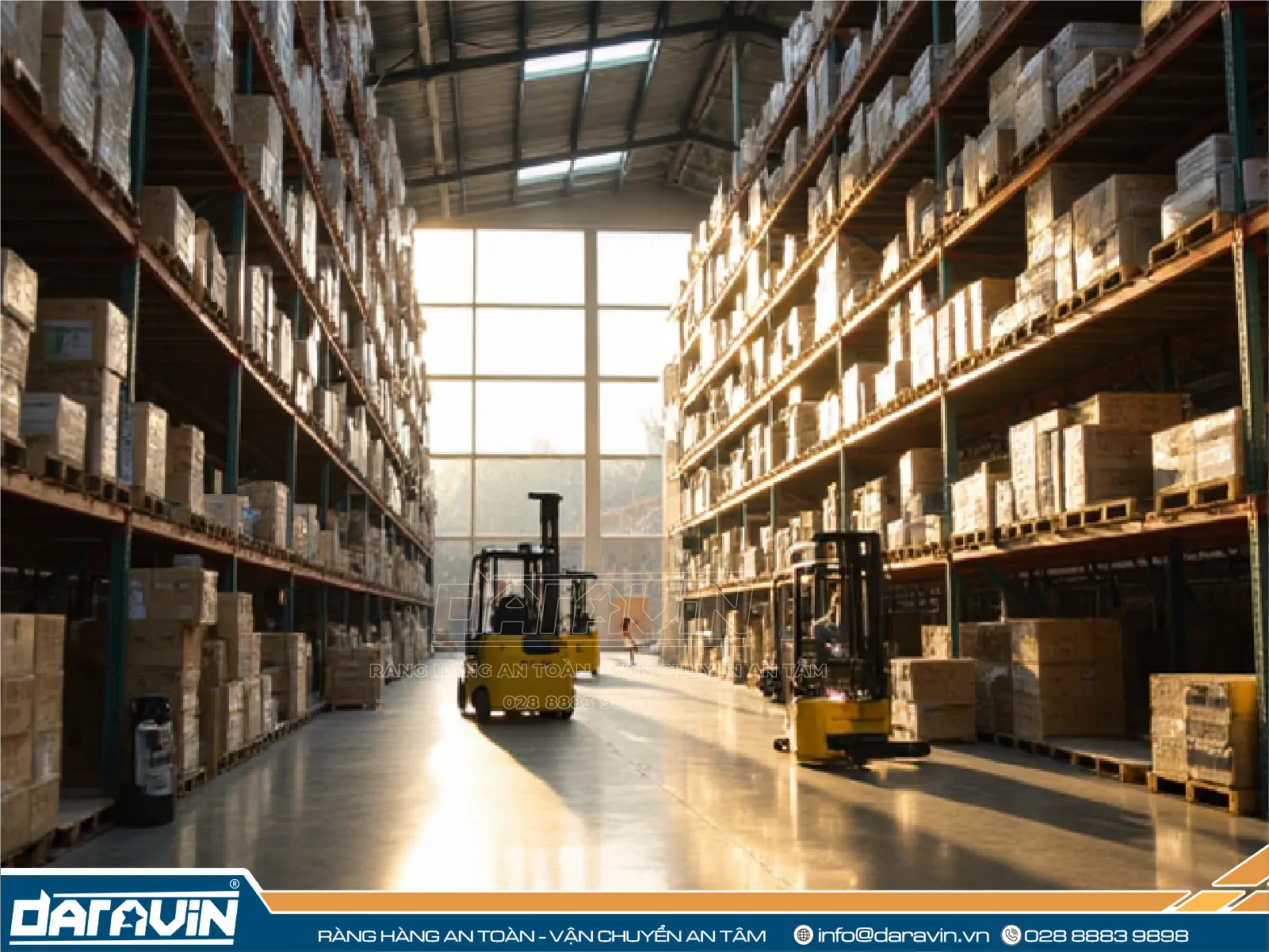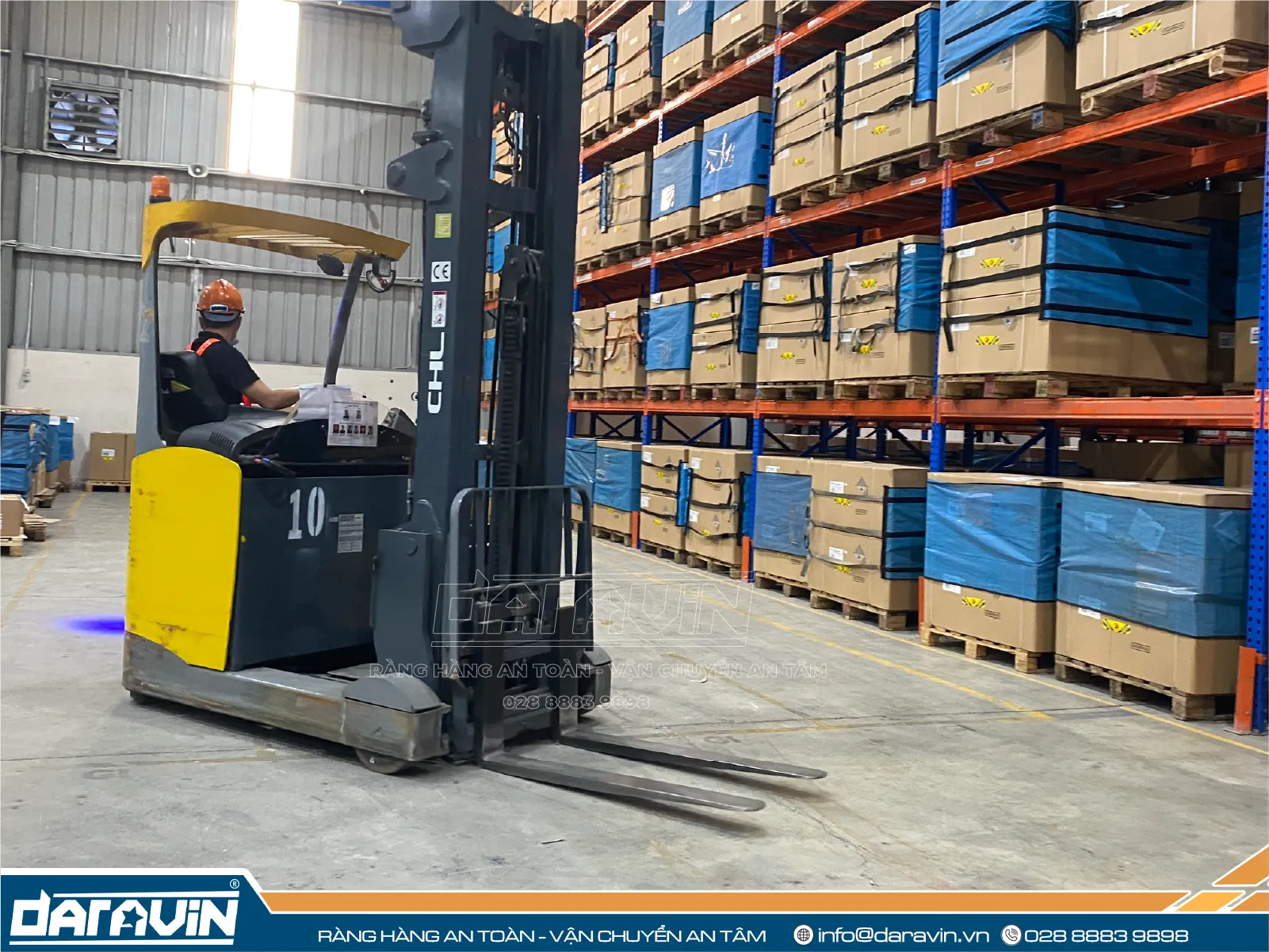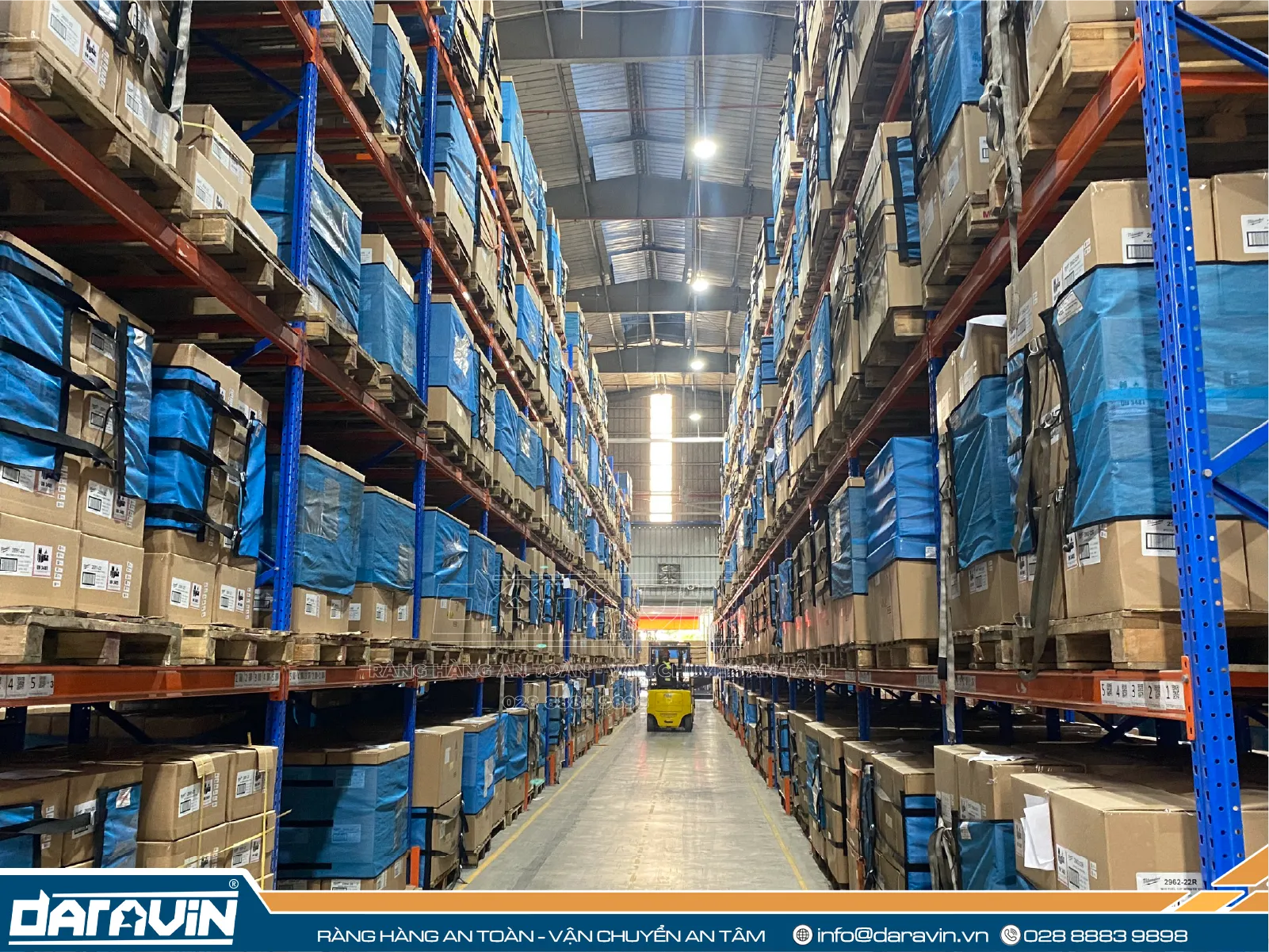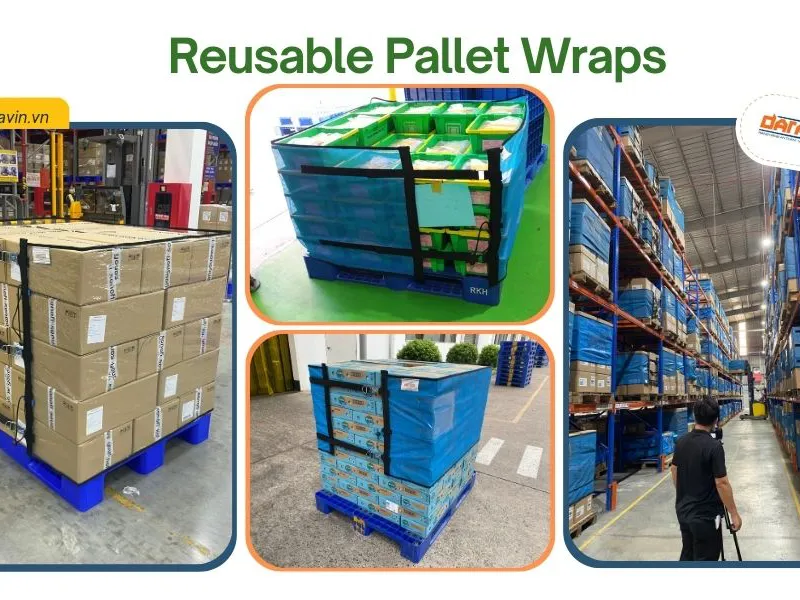Effective warehouse management methods in logistics
- I. What is Warehouse Management in Logistics?
- 1. Definition and Key Role of Warehouse Management in Logistics
- 2. The Importance of Optimizing Warehouse Management in the Current Context
- II. Types of Warehouse Management in Logistics
- 1. Common Warehouse Management Models in Logistics
- 2. Classification of Warehouses by Function and Characteristics
- III. Benefits of Effective Warehouse Management in Logistics
- 1. Optimized Warehouse Operating Costs
- 2. Enhanced Efficiency and Order Processing Speed
- 3. Improved Inventory Accuracy
- 4. Increased Customer Satisfaction
- 5. Reduced Waste and Progress Towards Sustainable Development
- IV. Steps in an Effective Warehouse Management Process in Logistics
- 1. Scientific and Accurate Inbound Receiving Process
- 2. Optimized Goods Storage Organization
- 3. Fast and Accurate Outbound Shipping Process
- 4. Periodic and Spot Inventory Checks
- V. Effective Warehouse Management Methods in Logistics
- 1. Applying Information Technology in Warehouse Management
- 2. Adopting Modern Warehouse Management Approaches
- VI. Conclusion
Discover the secrets to effective warehouse management in logistics to save costs and optimize performance. Solutions for warehouse managers...
I. What is Warehouse Management in Logistics?
1. Definition and Key Role of Warehouse Management in Logistics
Logistics warehouse management is a system of closely coordinated activities, including planning, organizing, directing, and controlling all aspects related to goods stored in a warehouse. This process spans from inbound receiving, storage, preservation, to outbound shipping to meet supply chain demands.
The core objective of warehouse management in logistics is to ensure goods are always ready when needed, located in the right place, in the accurate quantity, and in the best condition, while optimizing costs and efficiency.
2. The Importance of Optimizing Warehouse Management in the Current Context
In a fiercely competitive market with ever-increasing customer demands, optimizing warehouse management not only helps businesses save costs but also brings significant strategic benefits.
An effective warehouse management system will help minimize waste, maximize warehouse space utilization, accelerate order processing, improve inventory accuracy, and enhance customer satisfaction, thereby creating a sustainable competitive advantage.
II. Types of Warehouse Management in Logistics
1. Common Warehouse Management Models in Logistics
-
Centralized Warehouse Management: This model consolidates all goods at a single location, facilitating easier control and management, and optimizing resources. However, it can increase transportation costs and delivery times to distant geographical areas.
-
Decentralized Warehouse Management: With this model, goods are stored in multiple smaller warehouses, located closer to target markets. This helps reduce delivery times and last-mile transportation costs but requires close coordination among warehouses.
-
Automated Warehouse Management: This is an increasingly popular trend in modern logistics warehouse management. The use of automated systems and equipment such as robots, conveyors, and Automated Storage and Retrieval Systems (AS/RS) helps increase speed, accuracy, and reduce reliance on manual labor.
2. Classification of Warehouses by Function and Characteristics
-
Raw Material Warehouses: Store input raw materials necessary for the production process.
-
Work-in-Progress (WIP) Warehouses: Store products that have undergone one or more production stages but are not yet finished.
-
Finished Goods Warehouses: Hold completed goods, ready for distribution to customers.
-
Transit/Cross-docking Warehouses: Temporary stops for goods during transportation between different locations in the supply chain.
III. Benefits of Effective Warehouse Management in Logistics
1. Optimized Warehouse Operating Costs
An effective logistics warehouse management system significantly helps businesses reduce costs related to storage and warehouse operations. Optimizing warehouse space helps lower rental costs, utilities, and related expenses. Additionally, strict management of inbound, outbound, and picking activities helps reduce labor costs. Specifically, using appropriate and effective packaging solutions from partners like DARAVIN helps minimize damage to goods, thereby reducing costs associated with defective goods and other unforeseen expenses.
2. Enhanced Efficiency and Order Processing Speed
Effective warehouse management helps establish clear and optimized workflows for each stage, from inbound receiving to outbound shipping. This increases order processing speed, reduces waiting times, and minimizes errors. Applying technologies like Warehouse Management Systems (WMS) allows staff to easily locate goods, perform picking and packing quickly and accurately, which is especially crucial in e-commerce with its high demands for order processing speed.
3. Improved Inventory Accuracy
Effective warehouse management ensures businesses always have precise and up-to-date information on inventory levels. This helps minimize errors in the inventory counting process, preventing shortages or overstocking, thereby enabling appropriate purchasing and production decisions, and reducing costs arising from inventory discrepancies.
4. Increased Customer Satisfaction
When inventory is well-managed, businesses can fulfill customer orders quickly and accurately, minimizing errors and delivery delays. This contributes to enhancing customer satisfaction and loyalty, building reputation and competitive advantage for the business. The ability to flexibly respond to urgent orders or special customer requests is achieved through effective warehouse management.
5. Reduced Waste and Progress Towards Sustainable Development
Effective warehouse management focuses not only on managing goods but also on managing packaging materials. Rational use of materials, avoiding waste, and prioritizing the use of recycled, reusable, and biodegradable packaging materials (contact DARAVIN for sustainable solutions) helps businesses reduce waste released into the environment, contributing to sustainable development goals.
IV. Steps in an Effective Warehouse Management Process in Logistics
1. Scientific and Accurate Inbound Receiving Process
An effective inbound receiving process is the first and crucial step in logistics warehouse management. It includes: detailed inbound planning, quality and quantity inspection of goods upon receipt, prompt and accurate updating of inbound information into the management system, and finally, arranging goods into optimized storage locations.
2. Optimized Goods Storage Organization
Scientific and rational organization of goods storage is a key factor to maximize warehouse space and minimize goods retrieval time. Effective storage methods such as FIFO (First-In, First-Out), LIFO (Last-In, First-Out), or FEFO (First-Expired, First-Out) should be applied depending on the type of goods. Using appropriate racking systems and optimizing vertical space are also very important. DARAVIN provides packaging solutions like container thermal liners to protect special goods during storage.
3. Fast and Accurate Outbound Shipping Process
An effective outbound shipping process ensures goods are picked from the warehouse and prepared for shipment quickly and accurately. Steps include: receiving outbound requests, identifying goods locations, selecting and consolidating goods as requested, carefully inspecting and packing goods, and finally, updating outbound information into the system.
4. Periodic and Spot Inventory Checks
Periodic and spot inventory checks are essential to ensure the accuracy of inventory data. This helps detect and address discrepancies promptly, thereby maintaining the accuracy of the warehouse management system.
V. Effective Warehouse Management Methods in Logistics
1. Applying Information Technology in Warehouse Management
The application of information technology plays a pivotal role in enhancing the effectiveness of logistics warehouse management. Warehouse Management Systems (WMS) help automate many processes, provide real-time inventory information, manage storage locations, and optimize in-warehouse operations. The use of barcodes and QR codes increases speed and accuracy in inbound, outbound, and inventory counting processes. Advanced technologies such as the Internet of Things (IoT) and Artificial Intelligence (AI) are increasingly being applied to monitor warehouse conditions, forecast demand, and optimize warehouse operations.
2. Adopting Modern Warehouse Management Approaches
Modern warehouse management methods such as Just-in-Time (JIT), Lean Warehouse, and Cross-docking help businesses minimize inventory, eliminate waste in processes, and reduce storage time, thereby optimizing costs and enhancing operational efficiency.
VI. Conclusion
Effective warehouse management in logistics is a crucial factor for businesses to achieve success in today's competitive business environment.
Applying advanced management methods, utilizing information technology, and choosing reputable partners for packaging and cargo protection solutions like DARAVIN will help businesses optimize costs, enhance performance, and build a sustainable competitive advantage.










main.comment_read_more